Inside: Use these 10 mental health activities for kids to improve their emotional health and help with depression, anxiety, and stress.
The other day, dressed in black, I sat in a church I’d never been to, and saw way too many familiar faces.
Sweet music was playing and as a slide show played on huge TV screens chronicling this family’s early days.
It was devastating to be there. It was devastating to watch this family greet family after family with forced smiles. It was devastating to watch teenagers in suits and tennis shoes mourn their friend.
This sweet high school boy died by suicide. He wasn’t the first in our community and sadly, he won’t be the last.
After we all cried and hugged our babies super tight that night, it left many parents asking so many questions:
What can we do to protect our kids from debilitating mental health issues?
How can we help them? How can we keep our babies safe? How can we prevent teen suicide?
How can we let our kids know help is available and while it won’t make everything perfect, it will make everything feel easier?
We have to protect our kids. We have to talk about tough topics. And we have to focus on our kids’ mental health with these mental health activities.
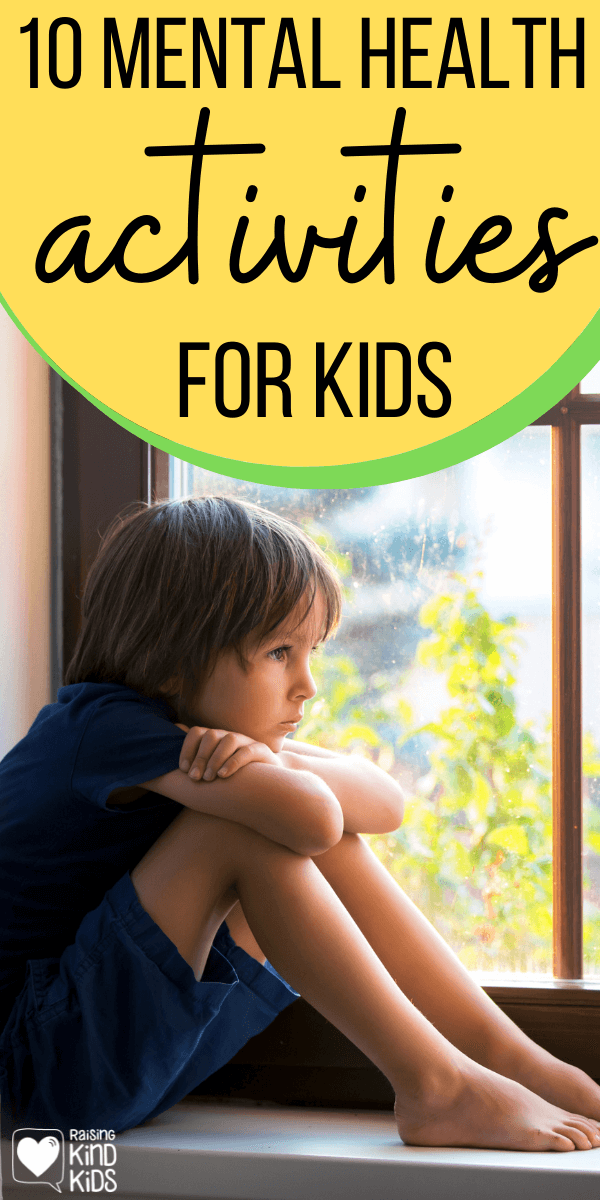
Thank you to Megan Santiago for this guest post:
Mental Health Activities for Kids
Learning about positive mental health activities for kids is essential to equip our kids to face the challenges they will face. Focusing on mental health helps our kids combat sadness, depression, anxiety, stress, bullying, suicidal thoughts, and/or self-harm.
***Please know that if your child is having suicidal thoughts, self-harms, or exhibits consistent/constant depression or anxiety, please seek professional help.
Here are a few mental health activities for kids:
1. Positive Affirmations
Science has shown that our brains are biased toward negativity. Our kids are also constantly surrounded by negative messaging from friends, classmates, social media, TV, and unsupportive adults.
The purpose of positive affirmations is to replace those negative thoughts with positive thoughts and what we think most often becomes our truth.
What we think affects how we feel and those feelings affect how we act and react to the world around us.
Affirmations work when we’re consistent, say them with confidence, and speak in the present tense as if we already believe what we’re saying is true.
And when our kids say these kindness affirmations daily and replace negative self-talk with positive self-talk, they will start to believe the new thoughts.
Which will improve their mental health and help them find more inner happiness because it bolsters their confidence and self-esteem.
Examples of Positive Affirmations:
- I try my best.
- I let go of what I can’t control.
- I listen to my body when it’s telling me something is wrong.
- I am kind.
- I am a good friend.
- I am loved.
- I am strong.
- I am valuable.
Get More Positive Affirmations for kids here.
Or you can make these affirmation rocks craft for kids to help them focus on the positive.
2. Use an Emotions Wheel
Our kids have big emotions and big reactions which can quickly escalate to be behaviors. So then we’re often left wondering: What is wrong?Why are they acting like that?
To build up our kids’ emotional intelligence and help them connect their emotions to their behaviors, we can use an Emotions Wheel.
An emotions wheel is a chart that provides a visual for children to show them what different emotions look like: happy, sad, excited, and angry.
When you see your child exhibiting big emotions, show them this Emotions Wheel and label their emotions for them: You’re sad. You’re happy. You’re angry.
Once they know these emotions, they can start answering how they’re feeling and point to the image that matches their emotions.
When they can express their emotions, it can then be easier to help them figure out where their big emotions are coming from.
3. Read About and Normalize Emotions
Keep talking about emotions, labeling emotions, and validating emotions.
Remind kids they can have more than one big emotion at a time. They can be mad and embarrassed. They can be sad and hurt. They can be scared and worried.
They can also purposefully practice calming themselves down when they’re having big emotions with these mindfulness jars or with these calming sensory bottles or with deep pressure.
Not sure how to get the conversation about big emotions started?
One easy way is through books:
The Boy with Big, Big Feelings
Related: Encourage Emotional Intelligence With These Books
4. Get Plenty of Exercise Outdoors
When we exercise, we release endorphins which improve our overall mood, our ability to sleep well, and help fight mental health issues such as depression and anxiety.
Exercise works as a natural antidepressant for adults and children by increasing serotonin, dopamine, and oxytocin levels.
And while exercising indoors is excellent, if you can get your kiddos outside, it will be even better for their mental health.
Sunshine helps improve sleep and increases their Vitamin D levels which improve mood, energy, and overall hormone balance.
Take a family hike, a bike ride, or just stroll around your neighborhood to release those endorphins and sneak in some extra sunshine.
You can also do yoga, but do it outside if the weather permits! Try these yoga poses printable for kids to make it easy to teach them.
Related: Gifts for Kids to Get Them More Active Outside
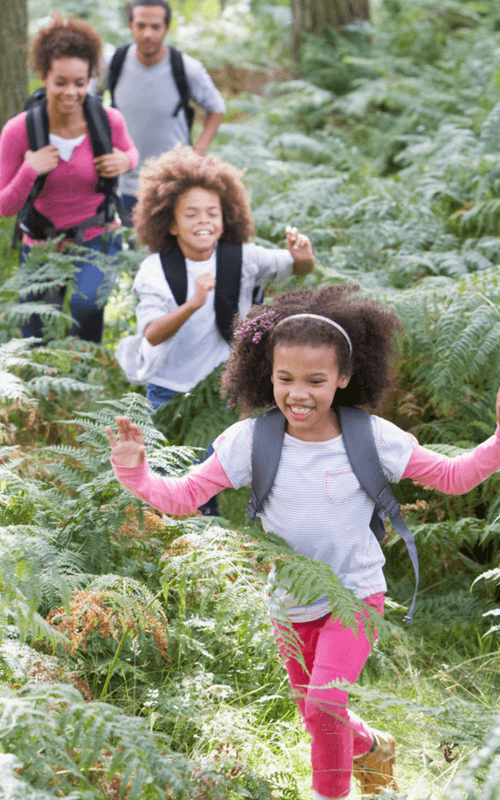
5. Meditation
Meditation is another excellent way to teach your child emotional regulation skills, which improves their mindfulness and gets them to focus on how they feel and why they feel that way.
You can play some meditation music or download a kid-friendly meditation app such as Insight Timer, Calm, or Headspace. You can also teach them these breathing exercises for kids.
Meditation is best if practiced daily for at least 1 minute at a time and for at least a week or two before you can really feel its calming effects.
6. Journaling
Encouraging your kids to write or draw about the events in their day and how they felt about them is a great way to work through a problem and figure out how their actions affected their emotions.
Encourage your child to write a few sentences about their day and how they felt when that happened. To prompt them if they get stuck, you can suggest they write/draw about the best part of their day (the “high”) and the worst part of their day (the “low”).
You do not need to get a fancy journal to make this happen, but they will need a dedicated spot to write. You can use a simple spiraled notebook or opt for a journal that comes with prompts like these:
My Emotions: A Book of Big Feelings Journal for Kids
Kids may also enjoy video journaling or vlogging about their day by keeping a digital journal (ensure safety when storing these videos).
7. Have Crucial Mental Health Conversations and Be a Safe Space
If we are focused on our kids’ mental health, there are certain conversations we have to have with them often, including the very concept of “mental health.”
We can tell our kids that to keep their bodies healthy we take them to the doctor and to keep their teeth healthy we take them to the dentist. We can then explain that to keep their minds/souls/spirits healthy, we can take them to see a mental health professional.
Removing the stigma of seeking help for mental health is a powerful step our generation can take to ensure kids ask for help when they struggle with anxiety or depression or stress just as easily as they ask us for help with a stomachache or a sore throat.
These are the 8 Crucial Mental Health Conversations Every Parent Needs to Have with Their Kids
And if we want our kids to come to us with big emotions and big conversations and things that feel worrisome or embarrassing to them, we have to create a safe space. We have to be a safe space, ready to listen to them.
To do that, we have to be ready to hear hard things. We have to allow their big emotions without a big reaction. And we have to be okay to hear things that don’t feel important to us but feel important to them without dismissing or belittling them.
That’s how they’ll come to us with the big scary mental health issues we need to hear about later.
8. Prove Your Love Often and “Pour” Into Your Kids
In the day-to-day grind of family life, it’s easy to forget to show our kids how much we love them. Of course we don’t ever stop loving them. But if we’re yelling or rushing or racing out the door, kids often don’t feel loved.
And when our kids don’t feel loved (even if they are loved), they’re more susceptible to believe a bully’s words or believe their own negative self-talk, or spiral from feeling anxious to having an anxiety attack.
But there is a simple way to prove to our kids how much they are loved and valued and heard and seen. These Proof of Love Activities help with sibling rivalry and bullying and how our kids interact with us in their home, but it also bolsters their mental health.
Related: Ways to Prove Your Love to Your Kids (And even more reasons why you should)
9. Spend Quality Time Together as a Family
Connection is everything. Feeling valued and wanted and part of a family unit that enjoys spending time with you validates us and fills us up.
Related: How to Build a Strong Family Identity
If our kids struggle with peer groups or friendship issues or playground drama or with academic stress or feel anxiety over an athletic competition, they are also going to question their self-worth and their value, and their amazingness. These negative thoughts can creep in and slowly become their truth.
However, if we spend time to ensure they feel connected, feel included, feel invited, feel wanted and feel secure in their home life, that offers them balance and stability.
When they feel balanced and stable and safe at home, they will have more confidence to deal with the other social issues that come their way outside of your home in healthy ways.
Related: Free Family Activities to Do Together to Build Connection
Related: 12 Family Activities to Do at Home
10. Focus on Good Habits
Creating healthy habits helps improve our overall health, but habits built around good sleep and limited screen time will definitely improve our mental health.
Good sleep is crucial for growth and development, restoration, and mental health. Research using neuroimaging scans on the brain showed well-rested individuals have more mental and emotional resilience.
But sometimes kids have a hard time falling asleep or staying asleep for many different reasons.
One common reason is a reduced production of melatonin. Melatonin is a hormone produced from our neurotransmitter serotonin, and it helps us fall asleep naturally.
To build up and best help support your child’s natural melatonin production turn all lights off except a tiny night light. You can also help your kids fall asleep faster by supplementing with kids-formulated melatonin if it’s pediatrician-approved.
Another simple way to create better sleep habits is to limit screen time overall but especially before bedtime.
11. Focus on Gratitude
Research has shown us time and time again that grateful people are happier people.
When we take the time to appreciate the world around us and what we have, we focus on the things that really matter.
We focus on our family. We focus on our health. We focus on the fact we are where we are and can take a deep breath in.
But we can easily lose sight of all the good that is around us unless we intentionally focus on gratitude.
In our family, we focus on it every November with our Gratitude Pumpkin.
But we also use these gratitude note cards and these year-round gratitude activities and we use this Gratitude Bundle of Resources
Related: How to Help our Kids Be More Grateful and Appreciative
Because at the end of the day, we all want what’s best for our kids.
We want them to be the best versions of themselves. Kind and empathetic and compassionate.
But also physically and mentally healthy.
Author Bio: Megan Santiago is a Clinical Mental Health Counselor in training. She runs her blog Holistic-Momma.com, teaching readers about natural ways to cope with their mental health. Megan has worked in the natural health industry for many years, and she is integrating that with her education in mental health. She has also coped with her own anxiety naturally, and she loves teaching others how to do the same.

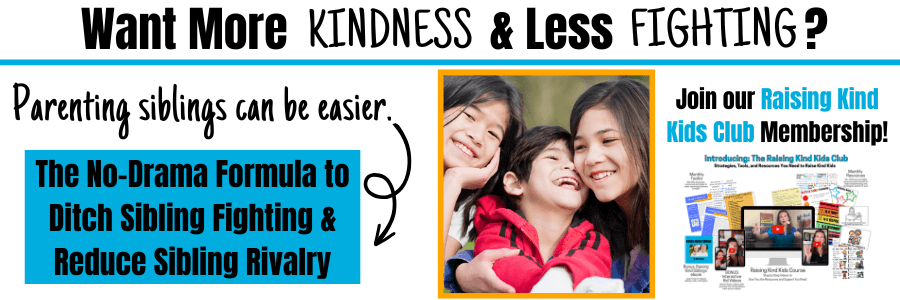
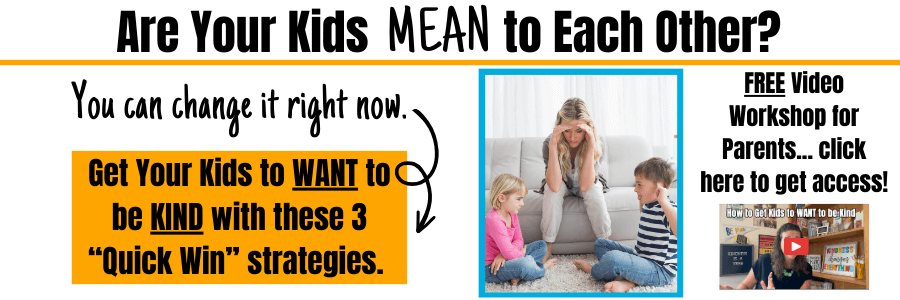









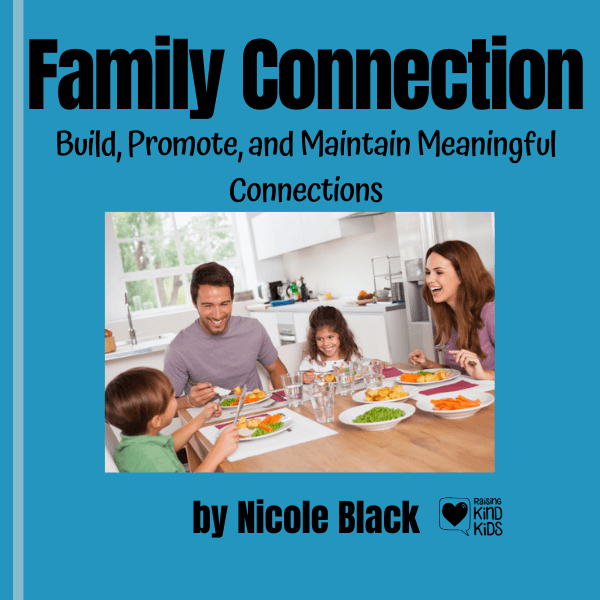

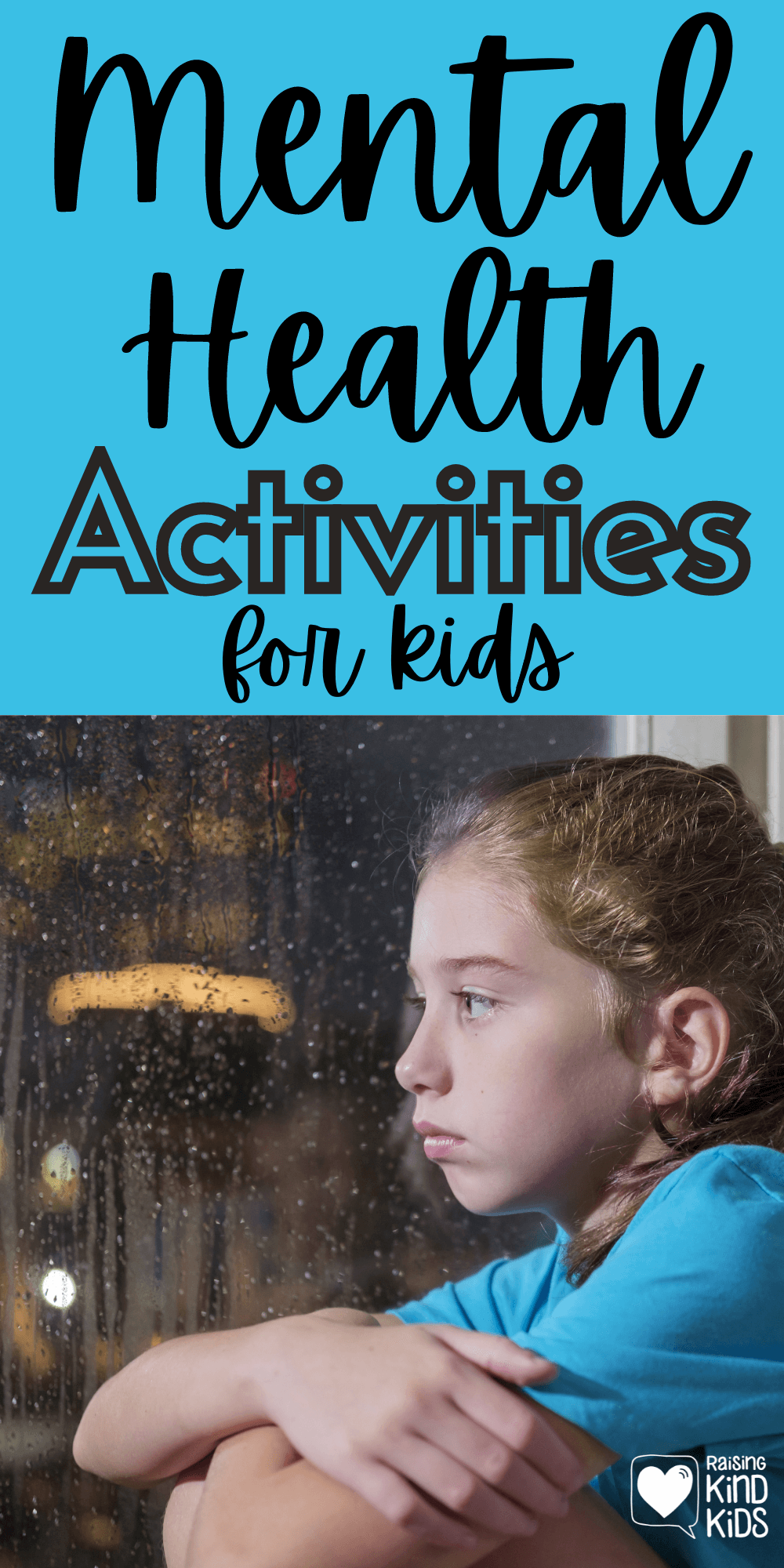
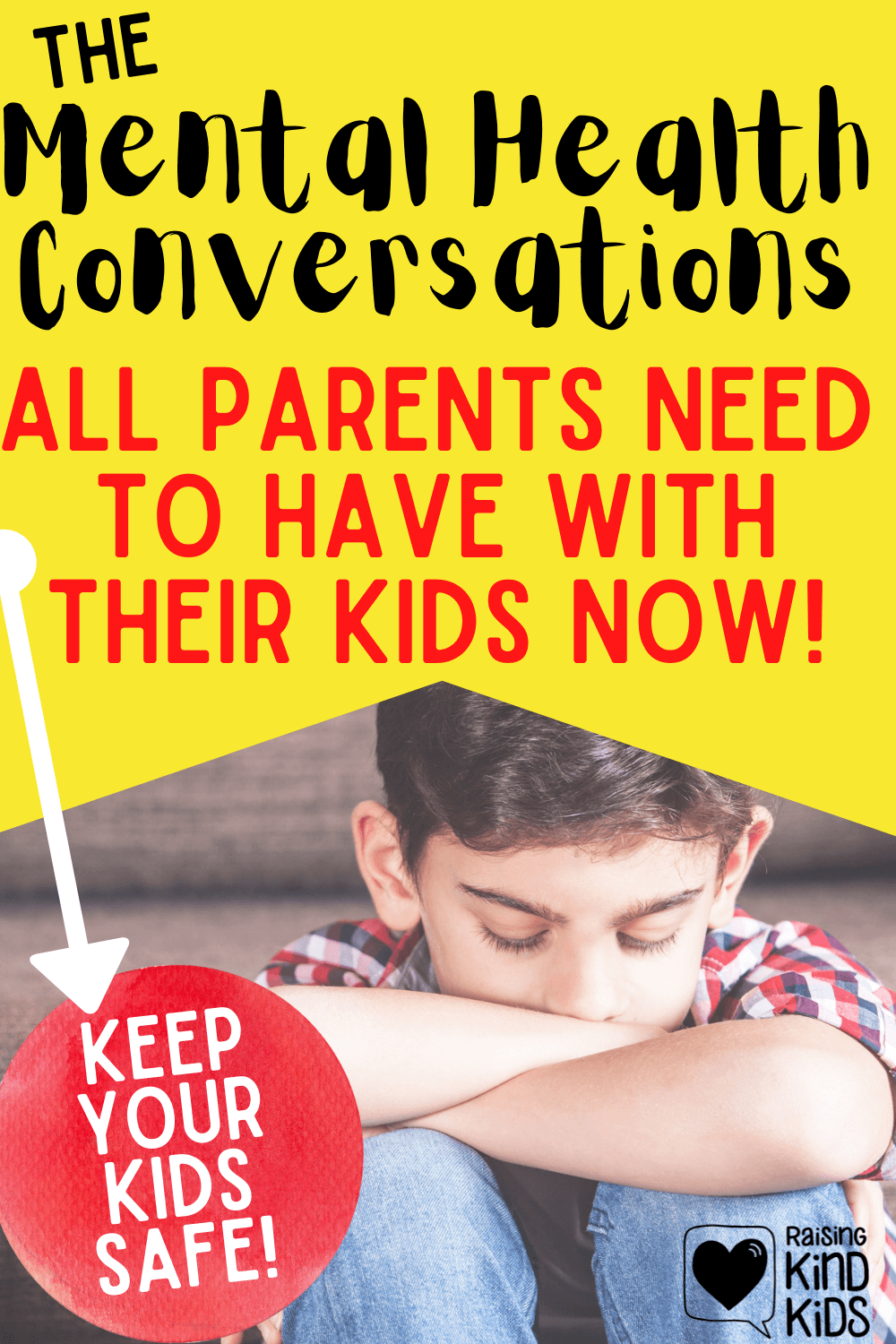
Leave a Reply